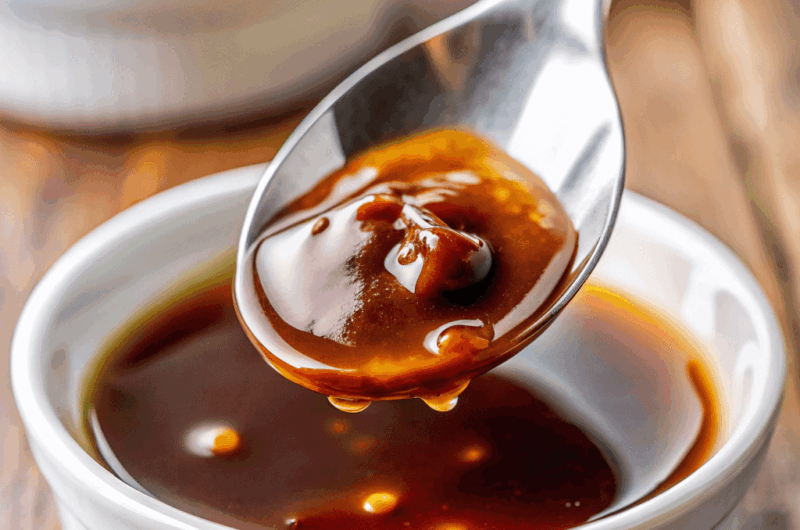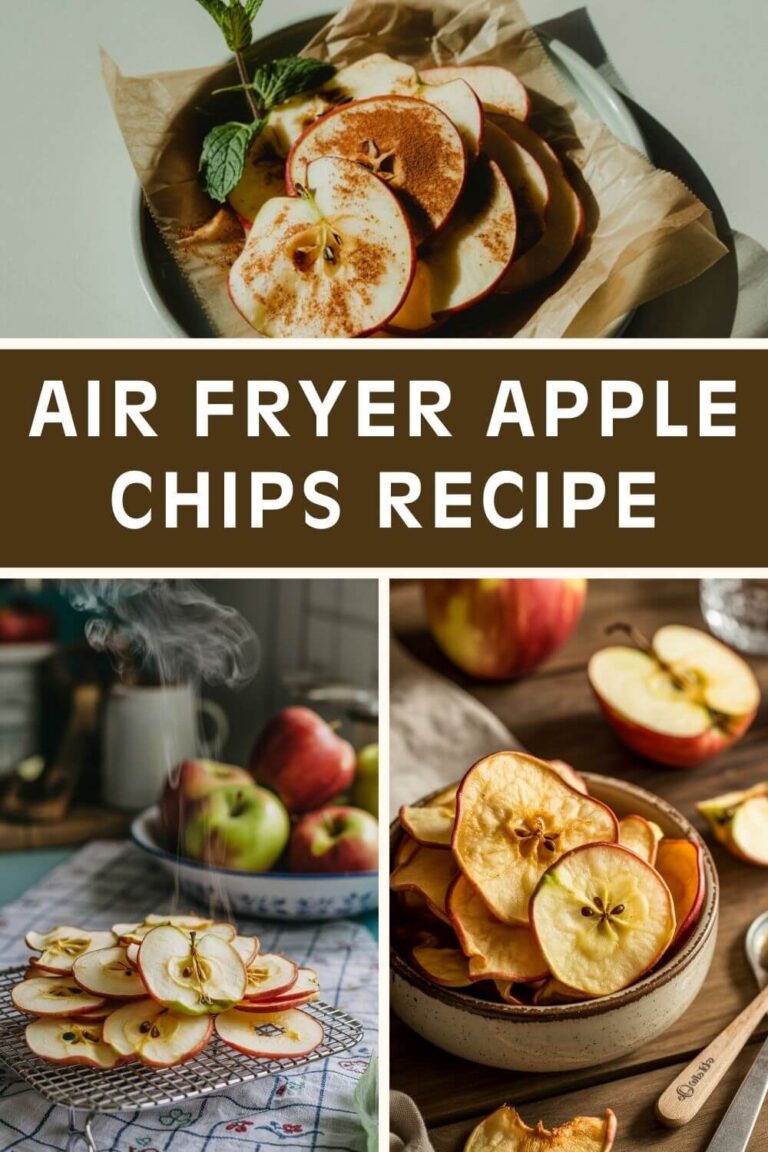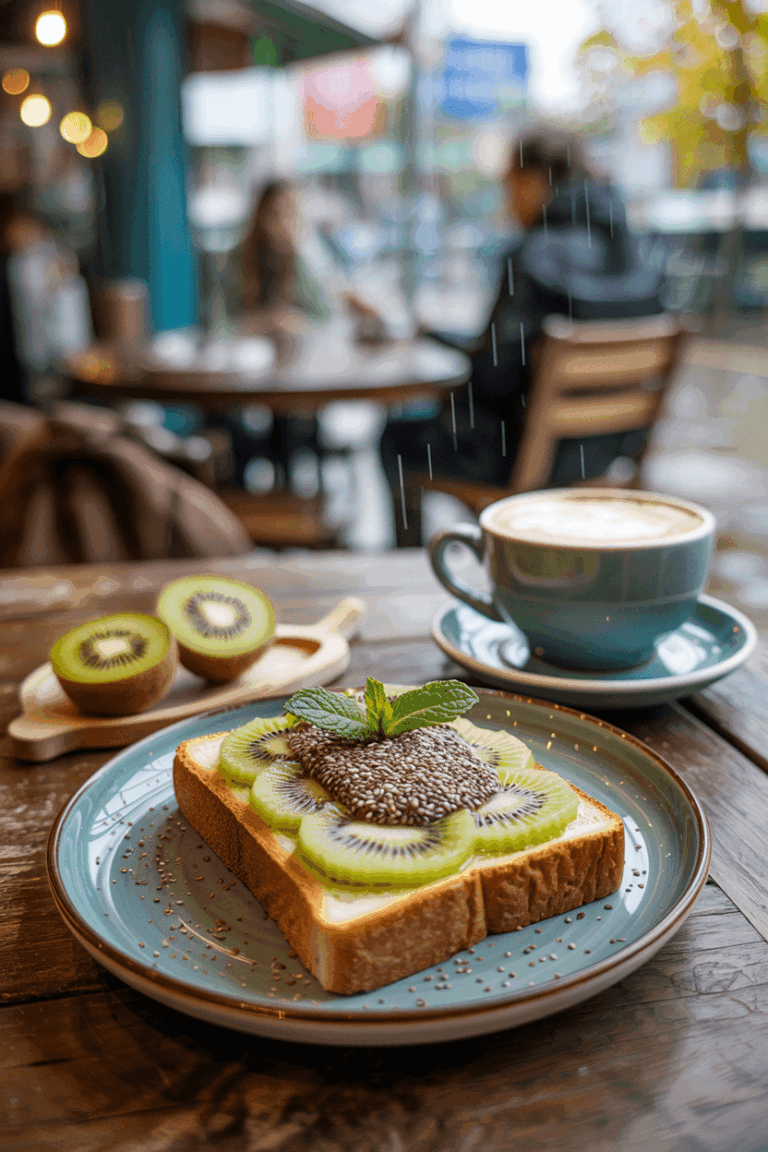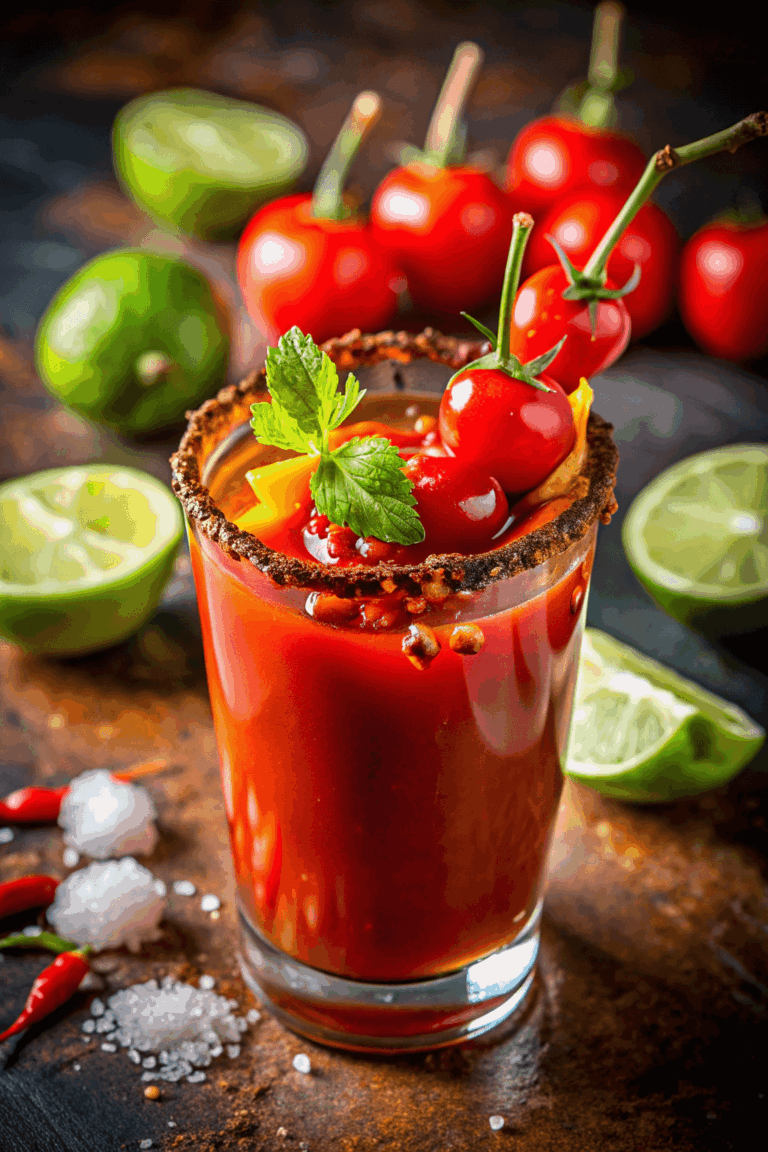The Best Fluffy Pancakes recipe you will fall in love with. Full of tips and tricks to help you make the best pancakes.
Stir Fry Sauce Recipe That Actually Tastes Like Takeout
You know those random weeknights when you’re mentally bargaining with your fridge, hoping it magically presents a five-star meal? Yeah, me too. Enter: my trusty stir fry sauce recipe.
It’s the kind of bold, glossy, flavor-packed blend that instantly makes tired vegetables feel like the star of the show. It sizzles in the pan with so much confidence, you’d think it had its own theme music.
But don’t be fooled—this isn’t your average sauce situation. This is the stuff that makes broccoli actually exciting, turns tofu into something you crave, and gives leftover chicken a serious glow-up.
I’ve tested it on picky eaters, takeout lovers, and even my own skeptical taste buds. Spoiler alert: it wins every time. Let’s get into the good stuff—you’re going to want this one in your back pocket.
Recipe Snapshot
| Category | Details |
| Yield | About 1 cup |
| Serving Size | 2 tablespoons |
| Prep Time | 5 minutes |
| Cook Time | 5 minutes |
| Total Time | 10 minutes |
| Calories per Serving | ~45 calories |
| Primary Cooking Method | Whisking + Simmering |
| Occasion | Weeknight Meals |
| Diet Type | Vegetarian (easily vegan) |
Calories are approximate and may vary depending on exact ingredients used.
Stir Fry Sauce Recipe
Course: SauceCuisine: Asian-InspiredDifficulty: Easy2
tablespoons5
minutes5
minutes45
kcalWhen I say this is the only stir fry sauce you’ll ever need, I’m not exaggerating. It’s that sweet-salty-umami trifecta that hits every craving all at once. Thickened just right, it clings to whatever you toss it with—veggies, tofu, chicken, even leftover rice if you’re desperate (been there). It’s a weeknight life-saver and tastes like you accidentally got takeout-level flavor at home. Minimal prep, max flavor. Boom.
Ingredients
1/2 cup low-sodium soy sauce – this is our salty umami base.
1/4 cup water – helps mellow the intensity.
1 tablespoon cornstarch – the magic that thickens everything up.
1 tablespoon brown sugar – just a kiss of sweetness.
1 tablespoon rice vinegar – brings that mild tang.
1 tablespoon oyster sauce (or hoisin for vegetarian) – adds complexity.
1 teaspoon sesame oil – for a nutty, toasty finish.
2 cloves garlic, minced – always.
1 teaspoon freshly grated ginger – brightens and deepens the flavor.
Optional: red pepper flakes or sriracha for a spicy kick.
Directions
- Combine Your Base Ingredients
Grab a small mixing bowl and add the soy sauce, water, brown sugar, rice vinegar, oyster sauce (or hoisin), and sesame oil. Give it a good whisk until the sugar dissolves. This is your foundational flavor mix—savory, slightly sweet, and ready to transform dinner. - Add Aromatics
Time to layer in flavor. Stir in the freshly minced garlic and ginger. This combo is what makes your kitchen smell like a legit Chinese restaurant. If you’re going for spice, now’s the time to toss in those chili flakes or a dash of sriracha. - Cornstarch = Thickening Power
In a separate small bowl, whisk the cornstarch with a tablespoon or two of water to make a smooth slurry. This step keeps your sauce from getting lumpy later. Once smooth, stir it into your main sauce mixture. - Cook It Up
Pour your mixed sauce into a small saucepan and set it over medium heat. Stir constantly (seriously, don’t walk away) as it starts to heat up. In about 2–3 minutes, the cornstarch will activate and your sauce will go from watery to thick and glossy. That’s your cue—it’s done! - Taste and Adjust
This is your moment. Give it a taste. Want it sweeter? Add a tiny bit more brown sugar. Saltier? A splash of soy. Need more zing? Another splash of vinegar. You’re in charge here. - Use It or Store It
Let the sauce cool slightly, then use it right away or transfer to an airtight jar and pop it in the fridge. It keeps for about a week. Shake or stir before each use to remix any settled bits.
Extra Tips
- Double or triple the batch: Save time and stress by making more than you need—you’ll thank yourself later when dinner comes together in minutes.
- Don’t skip the aromatics: Fresh garlic and ginger are non-negotiables for that takeout-style flavor. Bottled versions just don’t hit the same.
- Reserve extra sauce: If you’re cooking a big batch of stir fry, keep some sauce aside to drizzle over the finished dish for extra shine and bold flavor.
- Toss it with your grains: A splash of stir fry sauce stirred into your rice or noodles levels everything up. Don’t skip this if you love layers of flavor.
Equipment List
Nothing fancy here. This sauce comes together with basic kitchen staples:
- Measuring cups and spoons
- Small mixing bowl
- Whisk or fork
- Saucepan or small pot
- Airtight jar or bottle for storage
Substitution Options
One of the best parts of this stir fry sauce is how flexible it is. Whether you’re working with dietary restrictions or just ran out of something mid-cooking, you’ve got options.
If you’re avoiding gluten, tamari or coconut aminos work just like soy sauce while keeping things allergy-friendly. Need a vegetarian swap for oyster sauce? Try hoisin or even mushroom stir fry sauce—they bring the depth without the shellfish. For sweetness, maple syrup, honey, or agave easily replace brown sugar without messing with the flavor balance.
Going corn-free? Use arrowroot powder or tapioca starch instead of cornstarch. Don’t have rice vinegar? A splash of apple cider or white wine vinegar will still bring the zing—just use a bit less. And if sesame oil off the table due to allergies, go with grapeseed or avocado oil, or skip it altogether.
Out of garlic or ginger? Ground versions work in a pinch—about 1/4 teaspoon each will do the trick.
The magic of this sauce is that it adapts. These swaps keep the flavor punchy and the prep stress-free, no matter what’s in your pantry.
Make-Ahead Tips
This stir fry sauce was practically made for meal prep. You can whip up a batch in just 10 minutes and stash it in the fridge for when you’re too tired to think, let alone cook. Just pour the cooled sauce into a clean jar or bottle, seal it tight, and it’ll stay fresh for up to a week.
Want to go even further ahead? Freeze it! Yes, stir fry sauce freezes beautifully. Pour it into an ice cube tray, freeze until solid, then transfer the cubes to a zip-top bag. That way, you can pop out exactly what you need for a single dinner—no thawing a whole jar.
Before using, give it a good shake or stir, especially if it’s been sitting for a few days. Some ingredients may settle or separate, but a quick mix brings it right back to life. And if you’re using it straight from the freezer, just toss the cubes into your hot pan and stir until melted and bubbly.
Make it once, use it endlessly. That’s the kind of kitchen win I can get behind.
Storage and Freezing
This sauce is the meal-prepper’s dream. Store it in an airtight container in the fridge, and it’ll stay fresh for up to one week—just enough time to get you through hectic weeknight dinners. I like to keep mine in a glass jar with a tight lid. Before using, give it a solid shake or quick whisk to bring all the flavors back together.
And yes, freezing works like a charm. Just pour the cooled sauce into freezer-safe containers like Souper Cubes or silicone bags, then freeze for up to 3 months. When you’re ready to use it, let it thaw in the fridge overnight, on the counter for a bit, or warm it directly over low heat. It’s convenient, flexible, and always ready to jump back into stir fry duty.
Commonly Asked Questions
How can I make a low-sodium version of stir fry sauce?
To cut back on sodium, use low-sodium soy sauce instead of regular soy. For an even bigger reduction, consider replacing the soy sauce entirely with coconut aminos, which are naturally lower in sodium. Also, opt for water or low-sodium vegetable stock instead of chicken broth or salty bouillon cubes. This still gives you full flavor without the salt overload.
Can I make stir fry sauce gluten-free?
Yes! To keep things gluten-free, swap regular soy sauce for tamari, which has all the umami punch but none of the gluten. Most of the other ingredients in this recipe are naturally gluten-free, but it’s always wise to double-check the labels—especially for things like oyster or hoisin sauce, which can sometimes include wheat-based additives.
Is this sauce vegan or vegetarian?
It’s vegetarian by default and can easily be made vegan. Just use hoisin sauce instead of oyster sauce, and swap honey (if you’re using it) with maple syrup or brown sugar. No animal products, same amazing flavor.
Can I make stir fry sauce without soy?
Totally. Coconut aminos are your best bet—they’re soy-free, gluten-free, and have a similar salty-sweet profile. Just note they’re a bit sweeter and less salty than soy sauce, so you may want to adjust other ingredients to taste.
How do I thicken stir fry sauce?
If your sauce isn’t thick enough, add another 1/2 to 1 tablespoon of cornstarch. Whisk it with a splash of cold water or broth before stirring it into the hot sauce to avoid clumping. Heat and stir until the sauce becomes glossy and coats a spoon.
Can I use vegetable broth instead of chicken?
Absolutely. Vegetable broth works just as well, and it’s perfect if you’re cooking for vegetarians or vegans. Just make sure it’s a low-sodium version to keep your sauce from getting too salty.
How much minced garlic equals 2–3 cloves?
You’re looking at about 1 to 1.5 teaspoons of minced garlic. If you’re using pre-minced or jarred garlic, you can measure it straight from the jar, but fresh garlic will always give you the boldest flavor.
How much sauce should I use for 3 cups of rice and 2 chicken breasts?
About 1/2 cup of sauce should coat your cooked rice, chicken, and veggies pretty evenly. If you like your stir fry a bit saucier (same!), feel free to bump it up to 2/3 cup or drizzle a little extra right before serving.
Nutritional Information
Here’s a quick look at what you’re getting in every 2-tablespoon serving of this stir fry sauce (based on standard ingredients):
- Calories: ~45
- Carbohydrates: 8g
- Sugar: 3g
- Sodium: ~600mg (less if using low-sodium soy sauce)
- Fat: 1g
- Protein: 1g
- Fiber: 0g
Note: Nutritional values are approximate and can vary based on specific brands and substitutions used. Adjustments like using coconut aminos, omitting oyster sauce, or reducing sugar will impact these numbers.
Serving Suggestions
This stir fry sauce isn’t just for wok-tossed veggies—it’s your all-access pass to flavor town. Try it with a classic stir fry by tossing it with a medley of veggies like bell peppers, snap peas, carrots, and mushrooms, along with a protein like chicken, shrimp, or tofu. Serve it over a bowl of hot steamed rice or noodles, and you’ve got dinner that tastes better than takeout.
Have leftovers in the fridge? This sauce will rescue that lonely rice or leftover chicken in seconds. Heat them up in a skillet, pour on the sauce, and boom—dinner feels fresh again. It also works wonders in noodle bowls. Toss it with soba or spaghetti noodles, some stir-fried veggies, and top it off with a soft-boiled egg. Sprinkle on some crushed peanuts or sesame seeds for extra texture.
It’s also a sneaky good marinade. Just let your tofu, beef, or chicken soak in it for 30 minutes, then grill or pan-fry for next-level flavor. And if you’re lazy like me on some nights, just steam some broccoli or roast whatever veggie you’ve got, then drizzle this sauce over the top. Trust me, it looks—and tastes—like way more effort than it was.
And don’t sleep on rice bowls. A bed of quinoa or jasmine rice, a pile of fresh or sautéed veggies, and a generous spoonful of this sauce on top makes for the kind of meal you’ll actually crave. Once you make this sauce, you’ll start dreaming up new ways to use it. It’s just that good.
Final Thoughts
If there’s one recipe you need in your weeknight dinner toolkit, this is it. This stir fry sauce isn’t just a condiment—it’s a full-on game-changer. Whether you’re a stir fry newbie or a seasoned wok warrior, this sauce brings restaurant-level flavor with almost zero effort. It’s customizable, make-ahead friendly, and practically begs to be drizzled, dunked, or marinated into every meal.
So next time your fridge looks empty or your takeout budget’s begging for mercy, remember this little jar of gold. Your taste buds will thank you. And honestly? So will your wallet.





